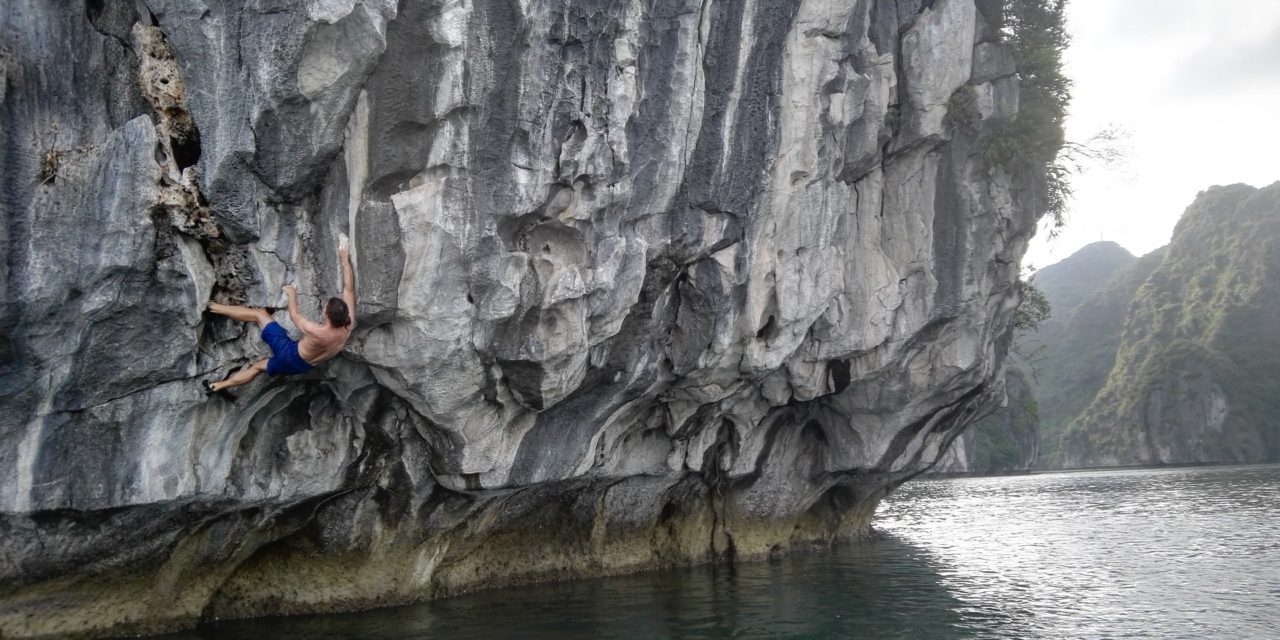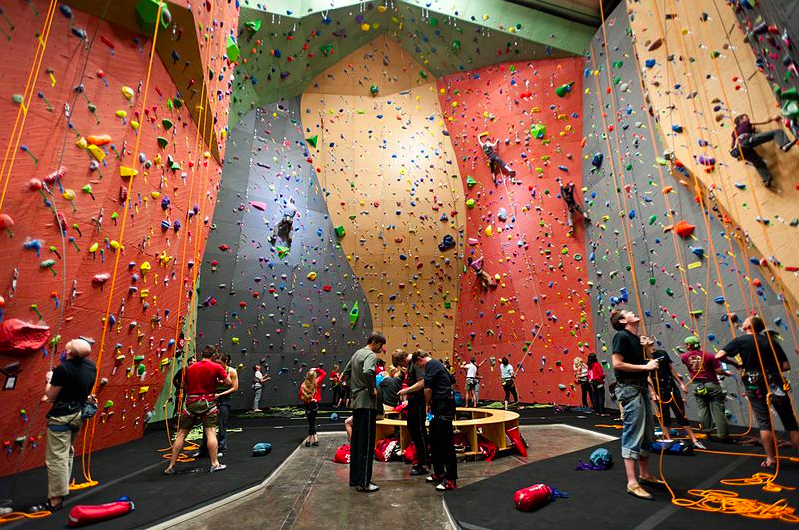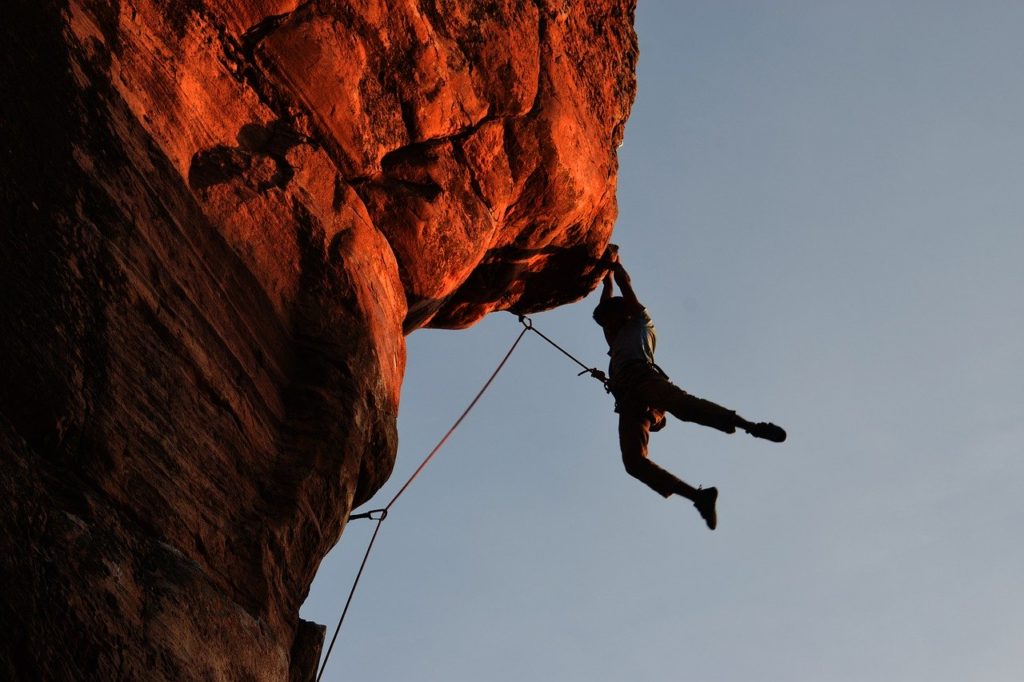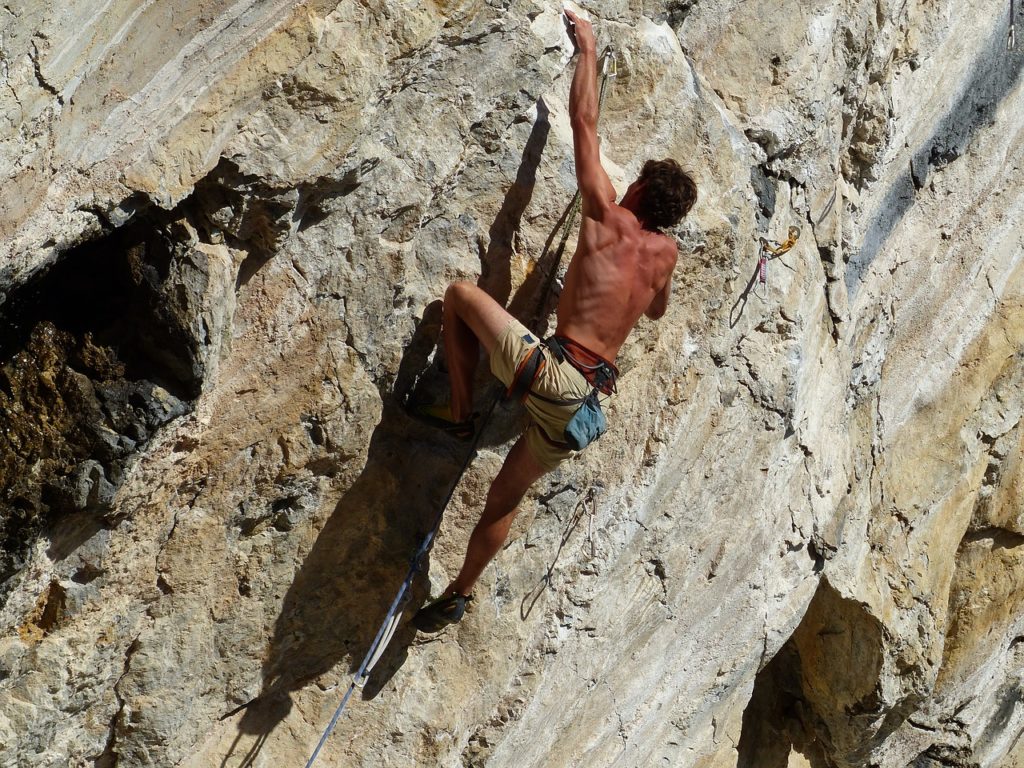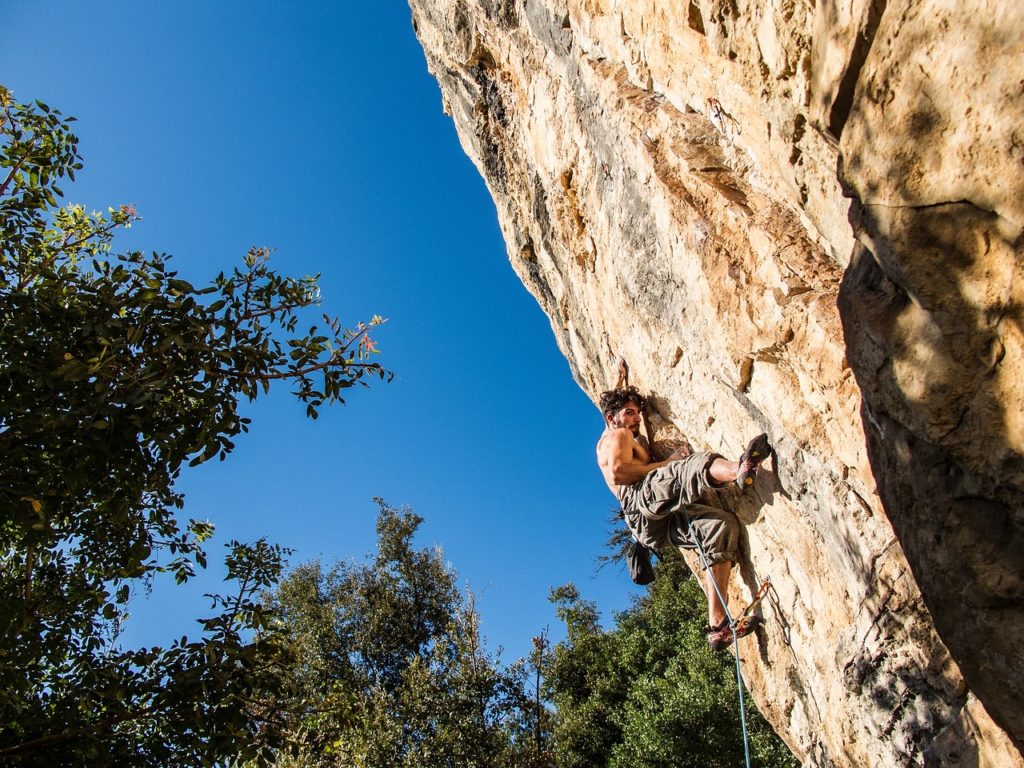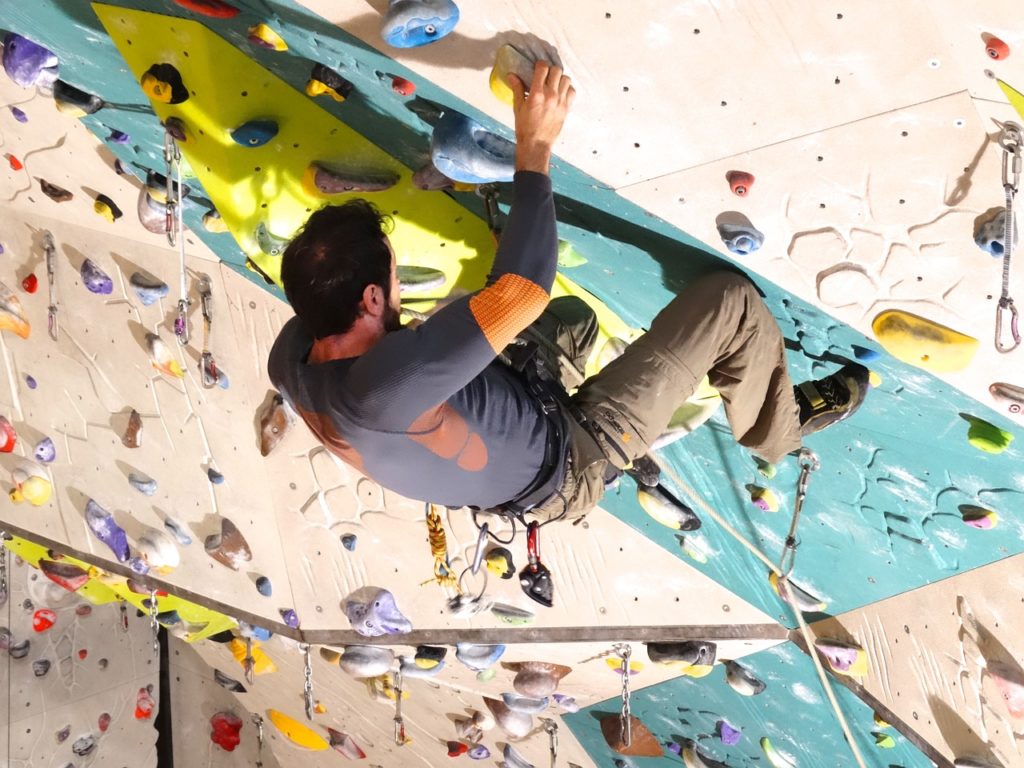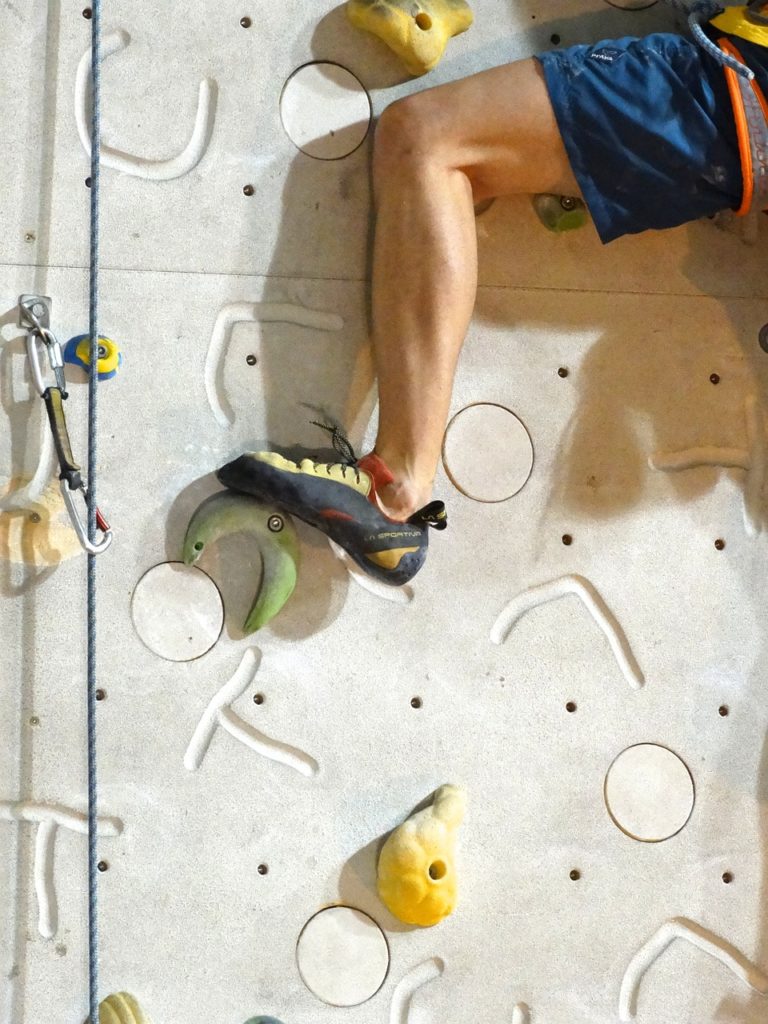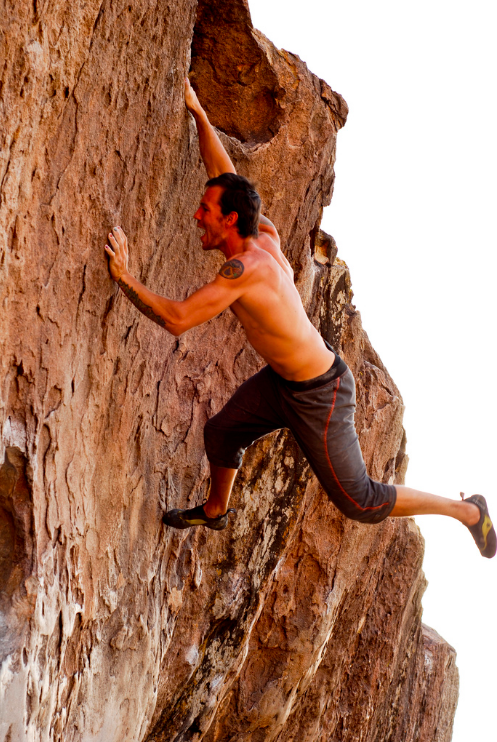Today I’m going to tell you exactly what you need to know about climbing movement techniques to help SKYROCKET your climbing performance.
(In fact…)
They’re the exact same techniques I used to help me go up 8 grades while traveling the world. Rest assured, you’re about to learn exactly what you need to know to improve your proprioceptive climbing technique today. Let’s get started!
What Exactly Is “Proprioceptive Climbing Movement” and Why Is It So Damn Important?
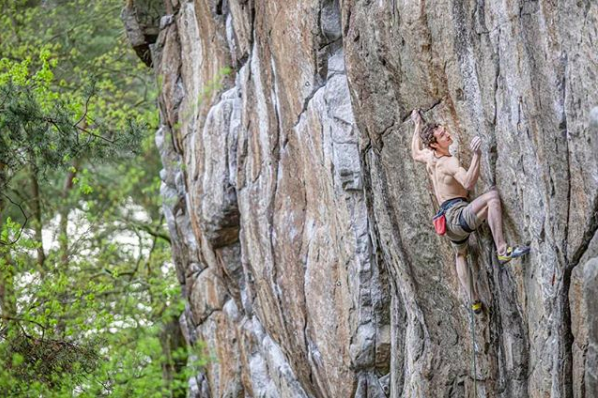
The Pros are Masters of Movement: Photo of @adam.ondra, Picture by Martin Pelikan
“Climbing movement” can be simply described as the way in which the climber moves while she is moving up the wall/rock. Oh so insightful. For how obvious climbing movement is, it is not (sadly) considered a “skill” which is needed to be developed.
Most climbers these days start climbing in a local gym. After receiving a few basic lessons on gym etiquette, how to tie their knots and belay, they are generally left to their own devices to make their own path and “figure it out.” This, at least, was my exact experience when I learned to climb, and I know I’m not alone.
An analogy of this in another sport would be someone learning to play basketball, being shown how to lace up his shoes and taught the basic rules of the game, and then being left on her own to learn how to dribble, shoot, do lay ups, etc…
It is possible that the idea that climbing is “natural” is a factor in the obvious exclusion of this opportunity for a new climber to learn proper technique before bad habits become ingrained. What tends to get passed along very quickly to a new climber is the competitive-grade obsessed nature of the sport. This is where new climbers are encouraged to try increasingly difficult routes as fast as possible with insufficient time devoted to technique improvement.
Luckly, you can have your cake and eat it too.
Improving your proprioceptive skill will not only make you an all around better climber, but it will also allow you to climb “harder” routes as your newly improved techniques will make difficult sequences easier and easier.
Proprioception Training and Climbing; How It Will Save Us All From Bad Form!
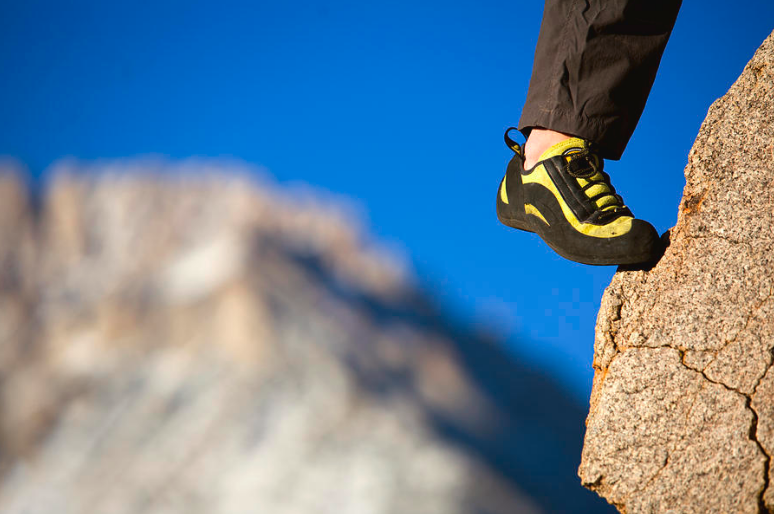
Photo by: Corey Rich
There are two different “types” of sensory data your body in constantly processing, external (exteroception) and internal (proprioception). Exteroception is the sensory information obtained by senses from outside of the body, vision, hearing and touch. While climbing, external data is gathered through your sense of vision, hearing and touch. Internal data is gathered by your internal sensory receptors, your “proprioceptors.” To that end, proprioception is your internal sense of body position and movement through space.
This includes body position, balance, foot placement and movement.
You are constantly processing these internal clues, even while doing “easy” tasks such as walking or doing a warm up climb which requires little thought. Conscious awareness of these internal clues is a highly important trait to any climber.
It is from proprioceptive clues that you gather crucial information to any climber, such as how pumped you are or how one foot placement affects your balance as opposed to another. As your prowess as a climber develops, these small subtle clues become all the more important, as the sense to make small micro adjustments to foot and hand placement can be the difference between sending and falling.
How to Improve Proprioception Fast
Okay, so we know what proprioception is and that it’s important. So the question is now, what do we do about it?
Deliberate Practice to Catapult Your Skill
Deliberate practice is more or less the idea that one’s level of mastery in any one skill isn’t just dependent on how many repetitions someone practices but in the way in practice.
Or in other words…
It’s not how much you train, but how you train.
In terms of climbing, this can be most easily done by choosing particular parts of a skill you’d like to improve, doing that skill repeatedly, incorporating feedback, then gradually increasing the difficulty. You can also think of this as “engaging in practice.” Or being conscious about the movements you’re doing and their given purpose.
Climbers are very bad about this. Trust me, I know from experience. It’s so easy to go to the gym, warm up mindlessly, say “hi” to your friends, then throw yourself on a few hard projects for awhile until you’re too tired to go on. We’ve all been there.
But luckily, deliberate practice does not have to be hard, and most of it can be done while climbing!
Climb Lots of Routes
This might seem painfully obvious, but unfortunately it needs to be said. The truth is that climbers tend to spend too much time on routes that are too difficult to be useful for training.
The fundamental habits of good proprioception can only be developed while… well… actually climbing.
The contrary, climbing a super hard boulder with a stopper mover or hanging on the end of the rope is not an effective way to quickly improve your technique.
Another way to say it…
There is a time and a place to climb hard, but that shouldn’t be every time you climb.
Not all your time climbing needs to be set aside for practice, but most climbers don’t set any time aside for practice. A good rule of thumb is to spend at least 50% of your time on the wall actually climbing. This doesn’t count belay time or time resting after a hard climb, i.e. if it takes you 10 minutes to climb a route, where you’re hanging for 8 minutes and climbing for 2, it is probably way too hard for training.
Repeat Difficult Moves and Sequences Various Times
Let’s face it, climbers are strange. Yes, I said it.
We spend weeks, months, and even years.. many times to dial a hard sequence only to be climbed one time and never repeated again. This is definitely something which I’m guilty of. But the truth is that climbing a route one time (many times desperately) does not indicate sufficient mastery of a problem.
An analogy of this would be a freestyle skier doing a 720 or backflip one time, and then never returning to try the same maneuver again. For this exact reason, hard problems that are successfully climbed should be repeated (in training especially) until they can be done with ease.
Watch Better Climbers to Identify Your Areas for Improvement!
For instance, let’s take a look at the video above of Alex Honnold magnificent free solo of El Sendero Luminoso in El Potrero Chico. In particular, look at the sequence when he does the super insecure crossover move with hundreds of feet of air under his feet.
If you count, there are 7 small hand and foot movements he uses to safely reach the jug on the right side of the screen!
Notice how he adjusts his balance, turns his hips into the wall, and shifts the angle of his foot on the same hold. Amazing! But you don’t need to watch stress-inducing Honnold videos to get great beta. Next time you’re at your local gym, actively watch some other people at the gym climb who have better technique for you.
Keep in mind that the “strongest” climber isn’t always the “best” climber in terms of technique. Less physically strong climbers will naturally seek out more efficient ways to do sequences.
So here’s your homework the next time you’re at the gym:
Climb a route that is “hard” for you but not quite at your limit. Let’s say one that can be climbed within 2-3 tries.
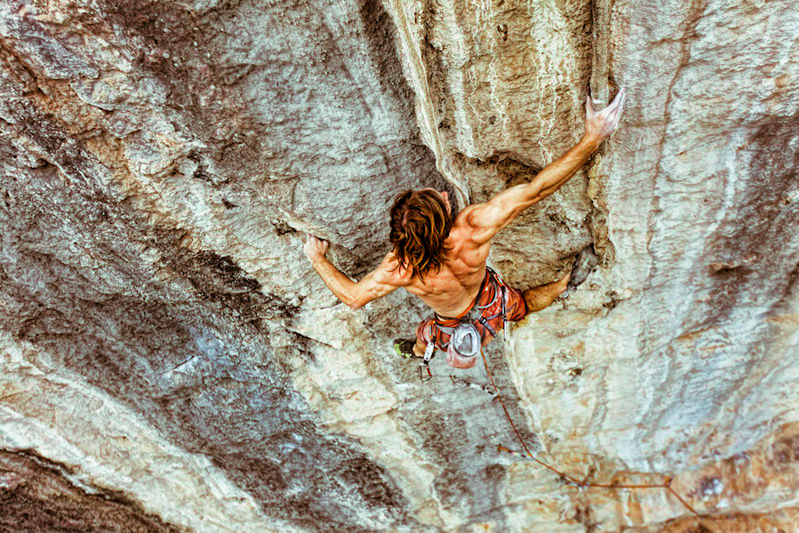
Chris Sharma showing some footwork in China’s Climbing Paradise, Yangshuo
After you’ve done it, sit back and watch a handful of climbers do the exact same problem. Compare what they do against what you did. Did that look easier, harder, smoother, more reachy?
Once you’ve seen a few other betas, go ahead and try the betas of the other people. Make comparisons, think “wow, when I used that foot and twisted my body weight toward the wall, that did this…”. If you do this for a handful of routes, I promise you that you’ll quickly start to develop weaknesses or tendencies in your own proprioceptive technique.
Proprioceptive Movement Drills to Soar Your Techniques to New Levels
So, now you know what proprioception is, why it’s important, and how to identify your weak points. Now I’m going to show you exactly the drills you need to know to rapidly improve.
And the best part? They can all be done while climbing!
Proprioceptive Focused Footwork Drills
Footwork is often referred to as the most important climbing skill to develop. The hard truth, as well, is that this can be the hardest to develop in the gym, where large footholds protruding from the wall are the norm.
Even outdoors, some styles of rock are much more footwork dependent, like slab or granite climbing. So unless you’re spending all of your time climbing in Squamish or Yosemite, you’re probably going to have to put some focused effort into your footwork to improve.
Most climbers agree that this is an area that needs to be improved upon, but for many, they have no idea how to go about it. Look no further. Here are some super easy drills you can use while climbing to greatly increase your proprioceptive skill and awareness.
Downclimbing
Downclimbing is one of the best ways to actively practice your footwork, and improve our “hand bias.” Downclimbing requires climbers to think “feet first” as opposed to the opposite. While downclimbing, you must deliberately select footholds, and guide your feet and toes.
Many times, you must do this without being able to see the hold, requiring you to rely on the feel and pressure of the foot holds! And the best part? Downclimbing is incredibly easy to incorporate into any climbing routine, especially while top roping or lead climbing. Next time you go to the gym, down climb every route you climb normally!
Blinking Drill
One of my favorite proprioceptive drills of all time. While climbing it will often be necessary to place your foot without being able to see it. This will require you to place the foot based solely off of proprioceptive awareness and feel. The “blinking drill” is by far the best drill to train this movement.
It’s composed of seeing a foothold with your eyes open, then closing your eyes and placing the foot on the hold. Once you’ve placed your foot, take a look to see if it at is the desired location. With time, you will be able to improve not only your accuracy, but speed of placing your feet as well!
Upper Body Proprioceptive Drills
Though I think footwork is always the place to start, no proprioceptive practice would be complete without also focusing on the upper body! Here are a few I’d suggest you get started with.
One-Arm Traverse
With one-arm traverses, you are able to practice your balance, foot placement and proprioceptive movement all at once. The drill is simple. While boulder-traversing, climb with one one arm.
That’s it.
Once you’ve done the traverse with one arm, try it again with the other arm. This drill sounds easy, but trust me, it can be super hard. Use big holds to start off on only slightly overhung walls, and with time, increase the steepness and make the reachers farther apart.
Blind Dynos
Similar to the blinking drill, blind dynos are another way to train both your proprioceptive movement and spatial awareness at the same time. This one is super simple and fun. While bouldering, select a set of handholds which allow you to dyno back and forth with just your hands.
Keep your feet in the same position. Do this a few times with your eyes open, then try it with your eyes closed! With time you’ll greatly increase your dyno and deadpoint accuracy.
Last Thoughts
There you have it! Exactly what you need to improve your proprioceptive climbing movement technique. Did you find it useful? Or is there something more that you’re dying to know? Either way, let us know, and make sure to share this with anyone who wants to improve their climbing movement right away!

